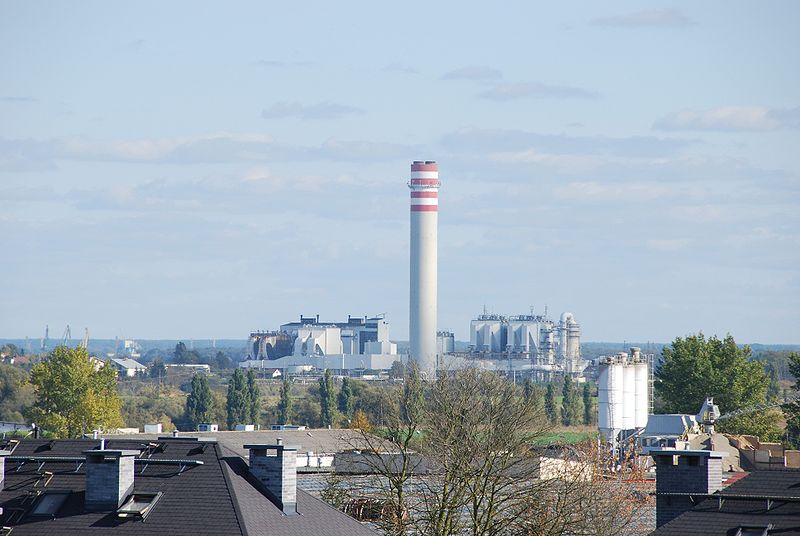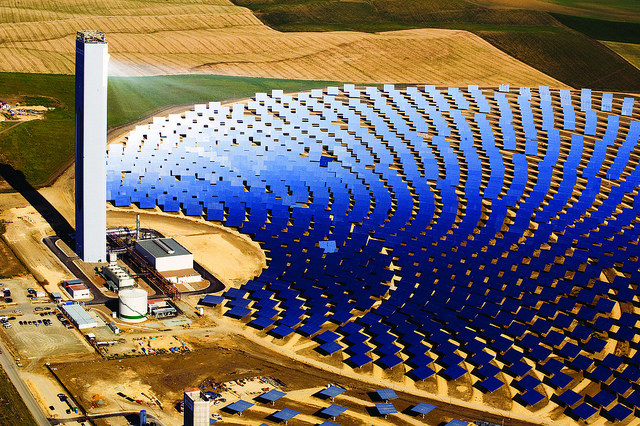Case study: Accelerators for a Sustainable Future
Case study: Accelerators for a Sustainable Future
Climate change is a hot topic in science at this moment in time: taking stock of the changes already happening, understanding the dangers, reducing our contribution to climate change and developing new clean energy sources are just some of the issues that scientists from all disciplines are addressing. Many applications of accelerators have been found that can help in the on-going efforts on climate change, ranging from the study of air pollutants in the atmosphere to developing alternative energy sources such as hydrogen fuel.
Water and Flue Gas Treatment
Fuelled by the demands of research, accelerator technology is developing at such a rate that the use of electron accelerators to destroy sulphur oxides and nitrous oxides pumped into the atmosphere by factories and power plants is now becoming a realistic, even better option for companies looking to reduce harmful emissions. Another potential application of electron beam accelerators is in the treatment of waste water. Efficient oxidising molecules are produced by the interaction between the ionising radiation and particles in the water, which leads to cleaner water.
 |
Controlling power plant gas emission: Treatment of the gasses from power plants by small electron accelerators in the flues of these power stations could help to reduce the level of greenhouse gasses in the atmosphere. Image credit: Pomorzany power plant, Poland – Pkuczynski |
For more information see;
Article [2009] (Symmetry Magazine): Cleaner living through electrons
Article [2012] (ISIS): Capturing a Cleaner Future
Doc [2011] (African Journal of Environmental Science and Technology): Application of electron beam technology in improving sewage water quality: An advance technique
Web (Forschungszentrum Jülich): Environmentally friendly power plants
(+) Doc (IAEA, 1994) [French]: Traitement des gaz de combustion par faisceaux d'électrons: assainir l'air
Study of Atmospheric Aerosols
Particle accelerators are used to generate X-rays for microscopy techniques used in studying the composition of, and therefore the origins of, atmospheric aerosols. Two such techniques: Scanning Transmission X-ray Microscopy (STXM), using X-rays emitted due to synchrotron radiation by a specialized particle accelerator, and Particle-Induced X-ray Emission (PIXE) spectrometry, are carried out at the Advanced Light Source (ALS) at the Lawrence Berkeley National Laboratory (LBNL) in the US. These studies are important in helping us understand the effects on the climate of pollution from various sources.
|
Climate change: A change in the world climate due to global warming is a major concern worldwide and much research into the effect of atmospheric aerosols on the climate is being carried out globally. Image credit: William Putman, NASA Goddard |
For more information see;
Article [2004] (Lawrence Berkeley National Laboratory): Composition of Atmospheric Aerosol Particles
Web (Forschungszentrum Jülich): Climate Research
Web (Elettra): Chemical Analysis of Particulates
Web (Jožef Stefan Institute): Environment
Fuel Cell Research
Techniques like Grazing-Incidence Small-Angle X-ray Scattering (GISAXS), which uses synchrotron radiation produced by particle accelerators, and Low-Energy Electron Diffraction Spectroscopy (LEEDS), where the diffraction of electrons from a particle accelerator is measured and used to understand the surface structure of crystalline materials, are used to study the potential of new materials for application in new more powerful batteries and fuel cells for hydrogen driven cars.
For more information see;
Web (Paul Scherrer Institute): Fuel Cell Systems and Diagnostics
Article [2009] (Lawrence Berkeley National Laboratory): Proton Channel Orientation in Block Copolymer Electrolyte Membranes
Web (Forschungszentrum Jülich): Fuel Cells
Web (Elettra): High Efficiency Energy
Solar Cell Research
Studies of the structure of organic solar cells using specialist spectroscopy and reflectometry techniques at synchrotron radiation facilities are helping to improve our understanding of organic solar cells. This research is helping to make the dream of cheaper, mass produced solar cells a reality, meaning that solar power will have the potential to one day become a realistic alternative to fossil fuels.
|
Gemasolar: The Gemasolar plant near Seville, Spain covers 185 ha and can produce enough energy to power 27,500 homes. Image credit: Markel Redondo, Greenpeace |
For more information see;
Article [2010] (Lawrence Berkeley National Laboratory): Structure of All Polymer Solar Cells Impedes Efficiency
Article [2011] (ISIS): Spreadable Polymer Solar Cells
Article [2011] (ISIS): Cling-Film Solar Cells Could Lead to Advances in Renewable Energy
Article[2009] (ISIS): Polymers for Organic Solar Cells
Website (Helmholtz-Zentrum Berlin for Materials and Energy): Solar Energy Research
Web (Forschungszentrum Jülich): Photovoltaics
Hydrogen Fuel Research
Scientists are using state-of-the-art spectroscopy techniques requiring particle accelerators to gain a deeper understanding of materials with potential uses for hydrogen storage and in electrochemical cells that turn water into fuel!
For more information see;
Article [2011] (ISIS): New Spin-Out Company From ISIS Develops Emission-Free Hydrogen Fuel
Article [2006] (ISIS): The Secrets of Storing Hydrogen
Article [2006] (ISIS): New Material For Hydrogen Storage
Article [2005] (Lawrence Berkeley National Laboratory): Hydrogen Storage in Carbon Nanotubes Through Formation of C-H Bonds
(+) Web[German]: Wasserstoffspeicherung im Festkörper (RUBION)
See also the section 'Accelerators for Energy and Environment'


